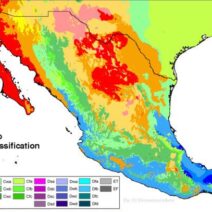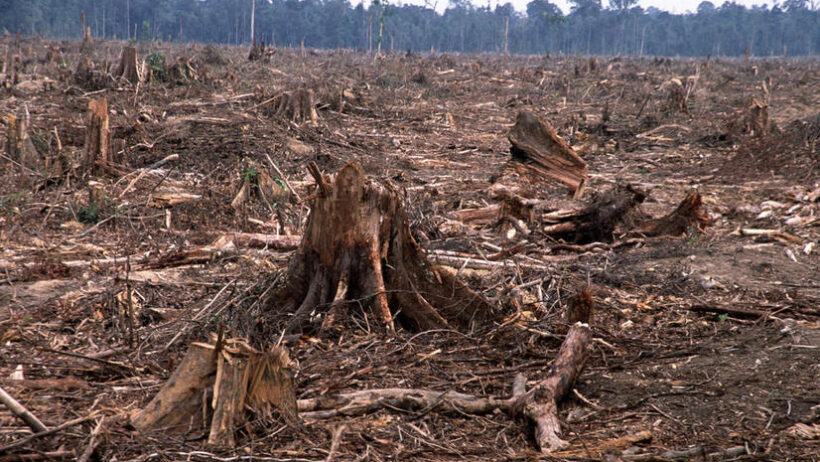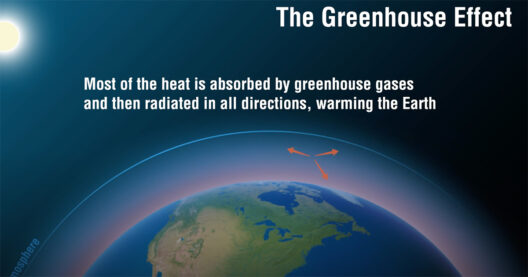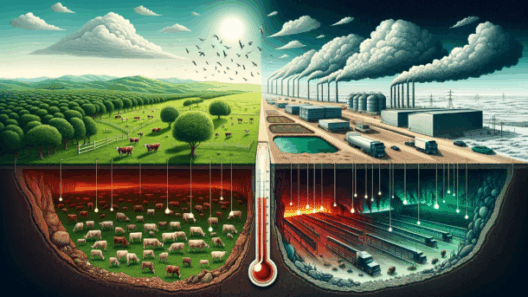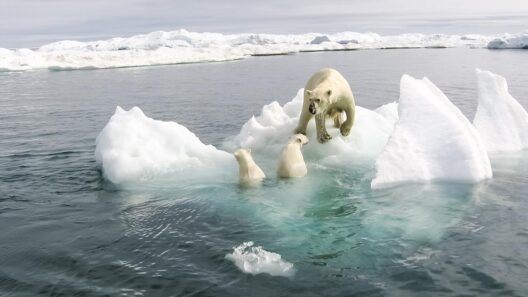The pressing issue of global warming has stirred both fascination and concern among the global populace. This phenomenon offers a compelling question: If the Earth could speak, would it plead for our attention? Understanding the root causes of global warming is paramount for addressing this crisis effectively.
Let us delve into the myriad elements that contribute to this significant environmental issue. By unraveling the complexity of global warming, we can better comprehend its impacts and what action is required to mitigate its effects.
What Lies Beneath: The Greenhouse Effect
At the heart of global warming lies the greenhouse effect, a natural process that warms the Earth’s surface. The sun’s energy reaches the Earth, where it is absorbed and re-radiated as infrared energy. Greenhouse gases (GHGs)—notably carbon dioxide (CO2), methane (CH4), and nitrous oxide (N2O)—trap a portion of this energy in the atmosphere, preventing it from escaping back into space. This phenomenon ensures a habitable climate.
However, an accumulation of these gases due to human activities has amplified the greenhouse effect, leading to an alarming increase in global temperatures. Carbon dioxide emissions alone have risen exponentially since the Industrial Revolution, primarily due to burning fossil fuels—coal, oil, and natural gas—which we rely on for energy and transportation.
The challenge posed by this scientific phenomenon is not just to understand the mechanics but to recognize our role in exacerbating it. Are our modern conveniences worth the ecological cost?
The Carbon Footprint: A Closer Look at Our Activities
Everyday activities contribute to the swelling of the atmospheric GHG concentrations. Industrial manufacturing, transportation networks, and energy production systems are all notorious for their carbon footprints. Mechanized farming practices, often reliant on synthetic fertilizers and pesticides, release nitrous oxide, a potent greenhouse gas with a warming potential that exceeds carbon dioxide’s by a staggering factor.
Moreover, deforestation plays a crucial role in escalating CO2 levels. Trees absorb carbon dioxide during photosynthesis, acting as carbon sinks. Yet, the relentless clearing of forests for agriculture, urban development, and logging not only diminishes our planet’s ability to sequester carbon but also releases stored CO2 back into the atmosphere. Could it be that our insatiable demand for land and resources hampers our climate goals?
Sustainability and Consumerism: An Inextricable Link
The interplay between sustainability and consumer habits is imperative in addressing global warming. The rise of consumerism has cultivated a throwaway culture—where products are often used and discarded with little thought to their environmental consequences. The fashion industry exemplifies this issue, with fast fashion contributing immensely to waste and pollution. Synthetic fibers, like polyester, are derived from petrochemicals, posing additional environmental hazards through microplastic pollution.
Embracing sustainable practices becomes not just a personal choice but a collective responsibility. Strategies such as minimizing plastic usage, supporting local markets, and choosing energy-efficient appliances can profoundly impact individual carbon footprints. The most perplexing question remains: Can our society pivot from instant gratification to mindful consumption?
Energy Production: A Double-Edged Sword
Globally, energy production is a double-edged sword—it fuels economic growth, yet contributes significantly to fossil fuel emissions. The reliance on carbon-intensive energy sources invites critical scrutiny. Transitioning to renewable energy sources, such as solar, wind, and hydropower, is indispensable for decoupling economic activity from greenhouse gas emissions.
Moreover, nuclear energy presents another avenue, though fraught with controversy. The challenge here lies not only in public perception but in the safe management of nuclear waste. As we navigate through the complexities of energy production, one must ponder: Will society prioritize long-term ecological stability over short-sighted economic interests?
The Role of Agriculture: A Fundamental Factor
Beyond industrial processes, agriculture itself is a significant contributor to global warming. Livestock farming, in particular, generates substantial methane emissions—around 14.5% of all human-induced greenhouse gas emissions occur from this sector. This figure prompts us to question the sustainability of our dietary choices. The environmental impact of meat consumption versus plant-based diets ignites a pressing conversation regarding ethical provisions for a changing climate.
Regenerative agriculture offers a promising solution, incorporating practices such as cover cropping and reduced tillage, thus enhancing soil health and carbon sequestration. Can it be that through a shift in agricultural paradigms, we could nurture both the land and the climate?
The Coalition of Solutions: Collaboration is Key
Addressing the multifaceted causes of global warming necessitates a collaborative approach involving governments, businesses, and individuals. Policy frameworks aimed at reducing emissions, coupled with innovations in technology and research, can prime the groundwork for meaningful change. International agreements like the Paris Accord set ambitious targets, yet the true challenge lies in global compliance and urgency.
The fight against global warming is not merely an environmental concern but rather a holistic movement; it encompasses socioeconomic factors, human health, and the well-being of future generations. As stewards of the planet, our endeavors must ignite a collective awakening. Each decision ripples outward, a drop in an ever-expanding ocean of climate consciousness.
In conclusion, understanding the root causes of global warming is critical for fostering effective solutions. By examining the greenhouse effect, our carbon footprints, energy production, and agricultural practices, we can embark on a path toward sustainability. The questions posed throughout—while playful—underscore the urgent need for introspection and transformational action. The fate of our planet hangs in the balance; is humanity ready to answer the call?

